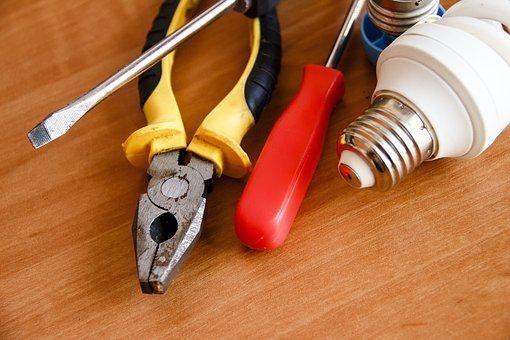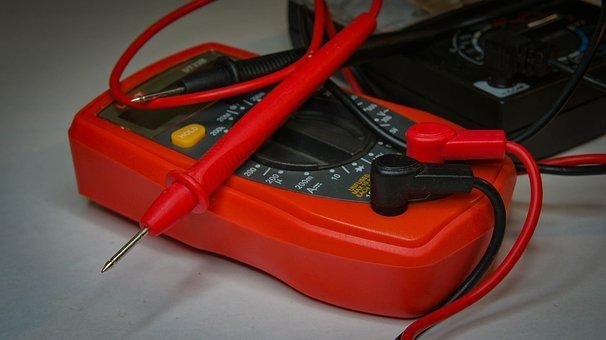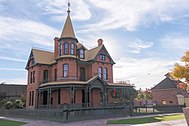Electrician in Carefree
Electrician Carefree
Reasonable pricing: There should be room for negotiation without lowering the quality of the work. Be careful with too low quotation since this may translate to low-quality products and workmanship.
Hire a full-time, or part-time, electrician. Make sure you verify the qualifications of any electrician before hiring them. Although a licensed electrician should be a priority, it is not the only thing to look at. It's important to consider other factors, such as reputation, experience, skill level, and reputation. Avoid hiring the cheapest electrician. Instead choose a professional with a proven track record.

Electricians Carefree
If you have a question about how electrical services work, here is some information you may find useful: When a power utility provides an electrical service to your home, there are two 120-volt service wires that carry the electricity into your home. Circuit breakers protect individual circuits. Amperage is the volume of electricity flowing through the wires. Listed below are some terms you may need to know to safely work with electrical wiring in your home.
First, check with the Better Business Bureau. This organization helps you find out if an electrician is licensed and has an acceptable record. Be aware that the BBB may use a different name or a formal legal name. Also check whether the electrician is insured and has a license number. If the BBB doesn't take action, the electrician may still be reputable. You can contact them to verify their credentials and check their license number.
Electrician in Carefree
Before you put your house up for sale, it's a good idea to get an electrical inspection. You will get a fair market price for your property. It will also make sure that your home and its occupants are safe. You will avoid unpleasant surprises by having an inspection. You'll be glad you did it. It will make sure there are no potential problems that could prevent you from selling your home.
Consideration when looking for electrical contractors. Besides qualifications, you will need to hire a licensed and insured electrical contractor with a good reputation, recommendations, and who is reliable and capable of delivering.


Electricians Carefree
An electrician must have the necessary qualifications to work in this field to be eligible for this license. An electrician must be qualified to work on swimming pools and HVAC systems. To apply for this license you will need a master electrician's licence. This license can be obtained if you have completed a state approved program and are able to show proof of general liability insurance. A limited electrician license permits you to work in electrical installations, but only with supervision. You must be an apprentice and have proof of general liability insurance.
It's a great way for you to make yourself known as an electrician. Referring others and asking for reviews is a great way to get word of mouth. A simple request to "tell a friend", can go a long ways. Online directories can help you attract more customers. Your services will be appreciated by more people who know you well and have had positive experiences.
Carefree Electrician
Ask for references from electricians if you are not sure about their quality. A copy of the insurance policy can be requested. It is a good idea to get a reference from an existing customer to avoid being duped. It is a smart idea to obtain three references to help you compare their work and communication. By doing this, you will be able to choose the one who provides the best customer care. You will find it easier to hire another electrician if the work is satisfactory.
In-loop cables are easier to diagnose if something goes wrong because there's no joint between the two ends of the wire. The advantage is that it makes it much easier to find the location of a fault and saves money on combined boxes. In-loop wires are also easier to find faults, since the longer the wire, the lower the voltage across the line. However, in-loop wiring is not as practical when installing lamp holders or switches, as it's more difficult to loop.

Electrician Carefree AZ
It is important to verify that an electrician who will be performing electrical work at your home is insured. It is important to ask for their license and insurance coverage. While it isn't mandatory in all states this information should be checked before you hire an electrician. Electricians who work for themselves may not be covered by insurance. This could make you liable in the event of an accident.
A reputation is important to your business. You can develop a relationship with a reliable electrician by asking for referrals. This way, you will have someone who you can rely on when a particular job comes up. This is an advantage for you because it will also help you get new jobs. Another important aspect of a good reputation is integrity. Your contractor should be honest and treat others fairly. You don't want to get into an argument with someone you've never met.
Electricians Carefree Arizona
Apart from electrical problems, it is crucial to have clear access to the electrical panel, the furnace, the air conditioning unit and the water main. Before the inspection begins, make sure that the inspectors have full access to all of these areas. Check for any obstructions that may hinder the inspection. Remove all vegetation around the perimeter of your home. They could block your home's entrance.
A home electrical inspection typically costs between $100 and $400 per session. It's important to remember that this price is an average and will increase if the home is large. Having a home electrical inspection from an electrician will prevent you from spending more money than you have to if a problem is discovered after the purchase. In addition to this, a home electrical inspection can protect you from costly surprises during closing.
Electrician in Carefree
About Phoenix AZ
Phoenix, Arizona
|
Phoenix, Arizona
|
|
|---|---|
| City of Phoenix | |
|
Clockwise, from the top: Downtown Phoenix, St. Mary's Basilica, Rosson House, Mystery Castle, Camelback Mountain, Arizona State Capitol, Arizona Science Center, Chase Tower, and the Papago Park
|
|
|
|
|
| Nickname(s):
"Valley of the Sun", "The Valley"
|
|

Interactive map of Phoenix
|
|
Coordinates:  33°26′54″N 112°04′26″WCoordinates: 33°26′54″N 112°04′26″WCoordinates:  33°26′54″N 112°04′26″W 33°26′54″N 112°04′26″W |
|
| Country | United States |
| State | Arizona |
| County | Maricopa |
| Settled | 1867 |
| Incorporated | February 25, 1881 |
| Founded by | Jack Swilling |
| Named for | Phoenix, mythical creature |
| Government | |
| • Type | Council-Manager |
| • Body | Phoenix City Council |
| • Mayor | Kate Gallego (D) |
| Area | |
| • State Capital | 519.28 sq mi (1,344.94 km2) |
| • Land | 518.27 sq mi (1,342.30 km2) |
| • Water | 1.02 sq mi (2.63 km2) |
| Elevation | 1,086 ft (331 m) |
| Population
(2020)
|
|
| • State Capital | 1,608,139 |
| • Estimate
(2021)[3]
|
1,624,569 |
| • Rank | 5th in the United States 1st in Arizona |
| • Density | 3,102.92/sq mi (1,198.04/km2) |
| • Metro | 4,845,832 (11th) |
| Demonym | Phoenician |
| Time zone | UTC−07:00 (MST (no DST)) |
| ZIP Codes |
85001–85099
|
| Area codes | |
| FIPS code | 04-55000 |
| GNIS ID(s) | 44784, 2411414 |
| Major airport | Phoenix Sky Harbor International Airport |
| Secondary Airports | Deer Valley Airport Phoenix–Mesa Gateway Airport |
| Interstates | |
| U.S. Highways | |
| State Routes | |
| Public transportation | Valley Metro |
| Website | www |
Phoenix (/ˈfiːnɪks/ FEE-niks; Navajo: Hoozdo; Spanish: Fénix or Fínix,[citation needed] Walapai: Banyà:nyuwá[5]) is the capital and most populous city of the U.S. state of Arizona, with 1,608,139 residents as of 2020.[6] It is the fifth-most populous city in the United States,[7] and one of only two U.S. state capitals with a population of more than one million residents, along with Austin, Texas.[8][9][10]
Phoenix is the anchor of the Phoenix metropolitan area, also known as the Valley of the Sun, which in turn is part of the Salt River Valley. The metropolitan area is the 11th largest by population in the United States, with approximately 4.85 million people as of 2020.[9] Phoenix, the seat of Maricopa County, has the largest area of all cities in Arizona, with an area of 517.9 square miles (1,341 km2), and is also the 11th largest city by area in the United States.[11] It is the largest metropolitan area, both by population and size, of the Arizona Sun Corridor megaregion.
Phoenix was settled in 1867 as an agricultural community near the confluence of the Salt and Gila Rivers and was incorporated as a city in 1881. It became the capital of Arizona Territory in 1889.[12] It is in the northeastern reaches of the Sonoran Desert and has a hot desert climate.[13][14] Despite this, its canal system led to a thriving farming community with the original settlers' crops remaining important parts of the Phoenix economy for decades, such as alfalfa, cotton, citrus, and hay.[15][16] Cotton, cattle, citrus, climate, and copper were known locally as the "Five C's" anchoring Phoenix's economy. These remained the driving forces of the city until after World War II, when high-tech companies began to move into the valley and air conditioning made Phoenix's hot summers more bearable.[17]
The city averaged a four percent annual population growth rate over a 40-year period from the mid-1960s to the mid-2000s.[18] This growth rate slowed during the Great Recession of 2007–09, and has rebounded slowly.[19] Phoenix is the cultural center of the state of Arizona.[20] Phoenix is also majority minority, with 42.6% of its population identifying as Hispanic and 42.5% as "white" in the 2020 census.[21]










